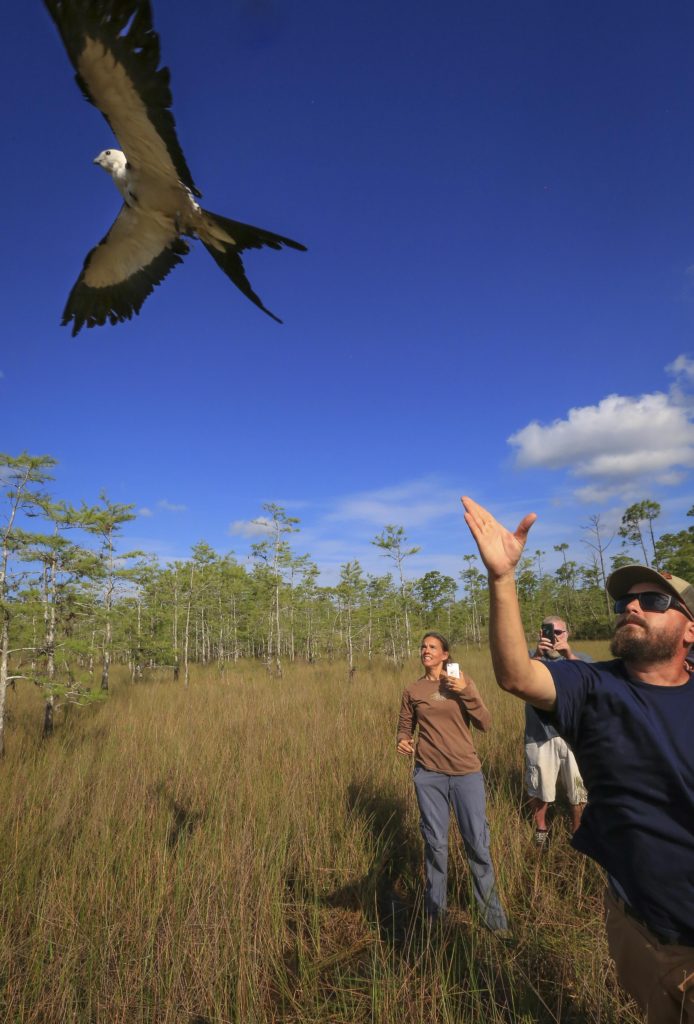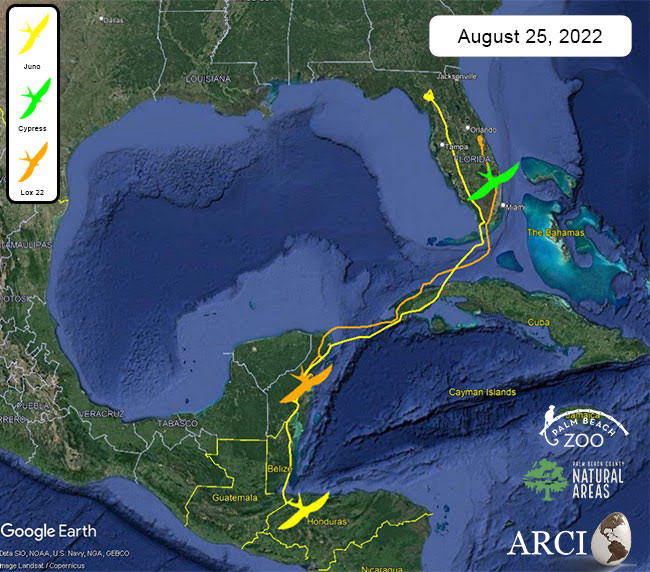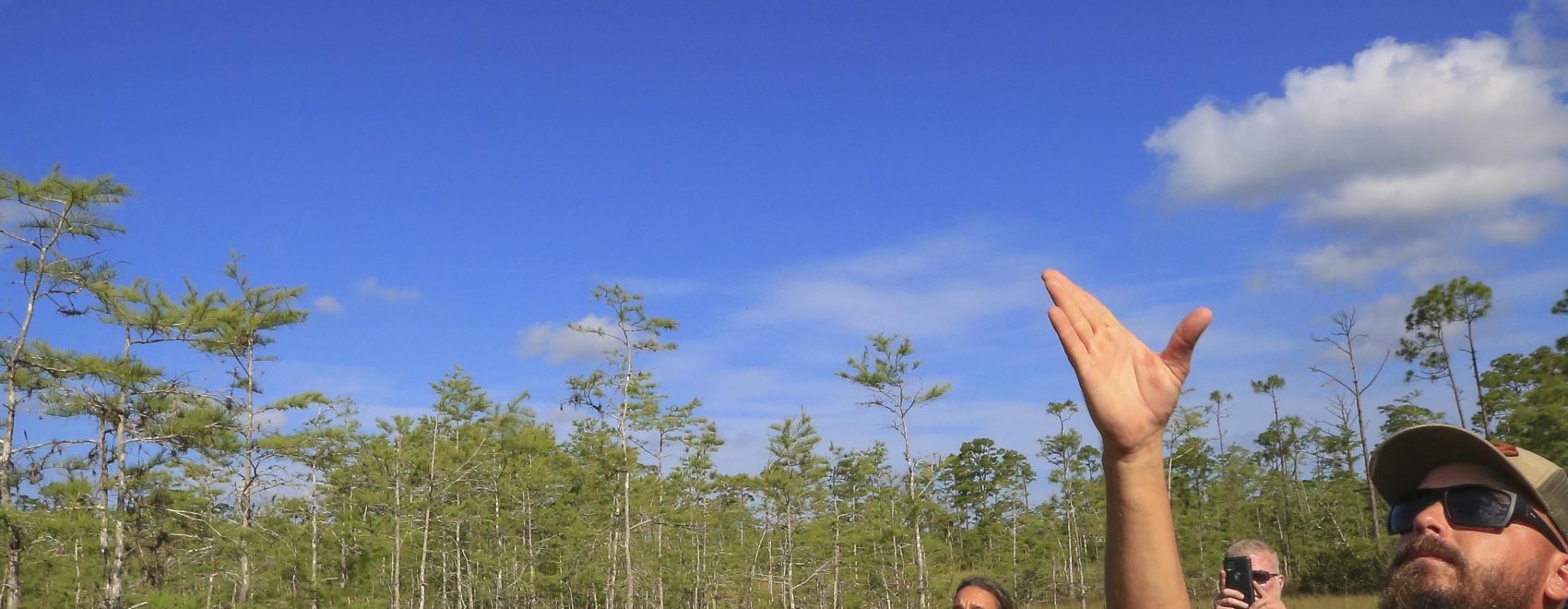If you were betting on which of the three GPS-tracked Swallow-tailed Kites from Palm Beach County Florida would leave on migration first, those of you that put your money on Juno would have won, but only by a day.

Juno spent a good part of her pre-migratory prep in north central Florida. On 13 August she started south fast, spending a night on the Babcock Ranch in Charlotte County. On the evening of 14 August, she headed south over water, crossing the Florida Keys before continuing southwest into Cuba. She made landfall west of Havana, near Abajo around 4am and rested for hours until light. She quickly continued to the south coast, then west to the Guanahacabibes Peninsula followed by an easy over-water trip to Cancún. Not wasting any time, Juno is currently in Honduras (25 August) and is our southernmost GPS- tracked Swallow-tailed Kite.
Lox 22 spent pre-migration in Brevard County, Florida and started south on 14 August. She spent one night in the Loxahatchee National Wildlife Refuge and the next day she left Florida to Cuba, making landfall 70 miles west of Havana near Las Cadenas and continuing along the north coast to Guanahacabibes where she spent the night. On 17 August, she had an easy 7-hour flight across the Gulf of Mexico making landfall north of Cancún. Currently she is enjoying a stopover in the northern part of the Sian Ka’an Biosphere Reserve.

If you haven’t already, tune in to the Florida Keys Hawkwatch in their second year of #kiteflight, counting Swallow-tailed Kites as they head across the Keys to Cuba and Mexico. It is fascinating for ARCI to compare our migratory tracks to what is seen with eyes to the skies! From 13 to 18 August FKHW counted over 3,000 Swallow-tailed Kites! Juno and Lox 22 were two of at least four of our GPS-GSM-tracked Swallow-tailed Kites that were moving through the Keys in that time frame. Juno crossed Marathon Key (where the FKHW is stationed) at about 6:30 pm on 14 August, however, she may have gone unnoticed because of her late departure. The next day (15 August), Lox 22 left south Florida, flying over Long Key State Park at 4:30 pm.
Meanwhile, back in south Florida, Cypress is still feasting on the insects of Palm Beach County. Any day now, he too will make his way to Mexico.
A big thanks to our collaborators at Palm Beach County Environmental Resource Management and the Palm Beach Zoo & Conservation Society. The Palm Beach Zoo & Conservation Society, in conjunction with long-time Zoo sponsor Florida Power & Light Company, have generously provided funding for the solar-powered GPS-GSM transmitters needed to continue this vital conservation effort.


Leave a Reply